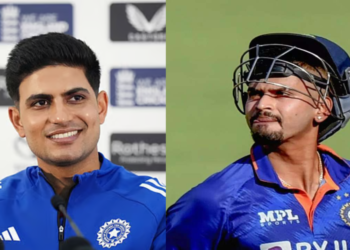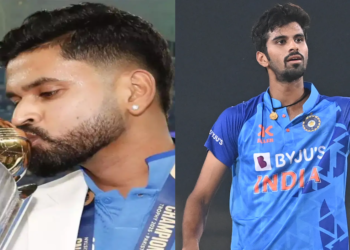Despite warnings from Bengaluru Traffic Police, the state government proceeded with the IPL victory event, leading to an uncontrollable surge of fans and a catastrophic security lapse.
BY PC Bureau
What should have been a night of jubilation for Royal Challengers Bengaluru and their devoted fanbase turned into a scene of unspeakable horror on Wednesday evening. Less than 48 hours after RCB clinched their long-awaited maiden IPL title in a nail-biting final against Punjab Kings, the city descended into grief after a deadly stampede outside M. Chinnaswamy Stadium killed 11 and injured at least 47 others—many of them young fans who had gathered for the team’s victory celebration.
The tragedy has raised a searing question: how did a celebration so anticipated and meticulously covered by the media descend into chaos and death? At the heart of the crisis lies a series of alarming missteps, systemic failures in planning and risk assessment, and what experts are calling a “catastrophic breakdown in basic crowd control protocol.”
The Making of a Perfect Storm
Wednesday’s celebration was billed as a historic moment—RCB’s first-ever Indian Premier League title since the tournament began in 2008. For fans who had endured 18 years of heartbreak, near-misses, and trolling, the six-run win on June 3 unleashed unbridled euphoria. Social media campaigns, calls for parades, and emotional tributes to players like Virat Kohli and Faf du Plessis surged through Bengaluru.
Stampede outside chinnaswami stadium in Banglore..
RCB winning celebration..
7 dead, 10 critical condition till now pic.twitter.com/7DYeA06rrc
— priyanka lathi (@priyankalathi1) June 4, 2025
READ: From Vlogger to Alleged Spy: Jasbir Singh’s Double Life Uncovered
This wave of enthusiasm translated into sheer numbers. While organizers expected a significant turnout at the stadium, estimates suggest between 2 to 3 lakh people converged around the Chinnaswamy Stadium precinct, which only seats 35,000. Security officials and law enforcement sources now confirm there was no reservation or pass system strictly enforced for general entry, and no effective crowd dispersal plan.
The initial plan reportedly involved a short roadshow, a welcome ceremony at Vidhana Soudha, and a symbolic victory lap at the stadium. However, traffic congestion warnings issued by Bengaluru Traffic Police ahead of the event were overlooked, sources inside the Home Department said.
Failure at the Gates: Where It All Went Wrong
The stampede occurred near the Cubbon Park gate—one of the main entrances to the stadium—where thousands without official passes congregated in hopes of seeing the players. With pressure building, fans began scaling fences, pushing barricades, and surging forward in tightly packed crowds. Some even climbed trees and buses. According to eyewitnesses, the moment gates opened briefly to admit VIPs and media, the crowd surged violently forward.
Update ; Stampede at RCB's IPL victory parade at Bangalore Chinnaswamy Stadium claims 20 lives, several injured. Fans overwhelmed, police struggled to control crowd. Governor, CM & ministers were present. Situation chaotic & heartbreaking. #RCB #IPL #BengaluruStampede pic.twitter.com/Mke3SiBhVY
— voruganti satish (@VorugantiSatish) June 4, 2025
“I saw people fall and then others just climbed over them,” said Shyamala N., a 19-year-old student who suffered minor injuries. “The police were trying to push us back, but there were too many people, and no way to breathe.”
A video circulating online shows fans screaming for help, with uniformed officers visibly overwhelmed. In the chaos, CPR was administered by fellow fans, and some victims were carried away by volunteers before ambulances could reach them. Seven were declared dead at Bowring Hospital, four at Vydehi Multispecialty Hospital. Among the dead were a 12-year-old boy and three college students.
READ: Honeymoon Horror: Meghalaya Police Confirm Murder of Missing Tourist
“Uncontrollable Crowd” or Unprepared System?
Karnataka Deputy Chief Minister D.K. Shivakumar, who was present at the airport to receive the RCB squad, later said, “We couldn’t use lathi-charge on such a young, vibrant crowd.” But experts are questioning why the event proceeded without better planning.
“This wasn’t a sudden outburst—it was a predictable congregation,” said Dr. Meenakshi Rao, a public safety expert. “A post-victory rally in a cricket-crazy city was bound to attract lakhs. The absence of a cap on attendees, lack of designated viewing areas with screens, and no emergency lane protocols created a pressure cooker.”
Reports suggest that crowd control units were largely stationed near the main stage and team entry zones, while vulnerable access points like the Cubbon Park gate were manned by general constables. A senior police officer who asked not to be named admitted that despite the presence of over 5,000 police personnel, no effective zoning or barricading strategy was implemented to regulate crowd movement.
Accountability and Backlash
The backlash has been swift and widespread. Former Karnataka Chief Minister Basavaraj Bommai and BJP’s Amit Malviya accused the Congress-led government of “criminal negligence.” “If they had the resources to organize a felicitation at Vidhana Soudha, they had the time to ensure basic crowd safety,” Bommai said, calling for a judicial probe.
Even within the cricket fraternity, voices of concern emerged. “This was avoidable,” said Sachin Tendulkar in a statement. “Celebrations should never come at the cost of life.” BCCI Vice President Rajeev Shukla called for tighter protocols for all public sporting events, and the KSCA issued a statement expressing “deep regret and solidarity with the families.”
The Board of Control for Cricket in India (BCCI) and the Karnataka State Cricket Association (KSCA) have announced ₹5 lakh compensation to the families of each victim. The state government is offering ₹10 lakh. But for the families of the deceased, money is little solace.
The Cost of Celebration
RCB cancelled all further celebrations once news of the stampede broke. Virat Kohli took to social media, calling the incident “devastating” and saying he was “at a loss for words.” Team management released a joint statement: “We played for the people of Bengaluru, and we mourn with them.”
But social media remains ablaze with anger. Posts on X (formerly Twitter) describe the event as “a complete administrative failure,” with questions swirling about why ambulances were delayed and why emergency exits were blocked by crowds.
A City in Mourning, a Nation on Alert
Prime Minister Narendra Modi extended condolences, calling the incident “absolutely heartrending,” while Congress President Mallikarjun Kharge and Rahul Gandhi called for the strengthening of public safety mechanisms.
The National Disaster Management Authority (NDMA) has now reportedly been tasked with reviewing crowd control protocols at all major upcoming events, including Ganesh Chaturthi and Dussehra processions.
As Bengaluru mourns, a broader national reckoning is underway. The magisterial inquiry ordered by CM Siddaramaiah will examine security lapses, administrative decisions, and the role of law enforcement. But for the families of 11 who died celebrating their team’s glory, and the dozens still in ICU beds, justice and answers may come too late.
For now, the haunting images of celebration-turned-carnage remain a grim reminder: when planning fails, even joy can kill.












